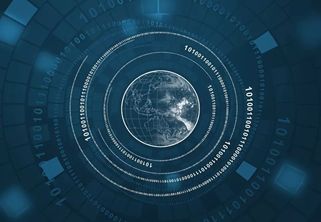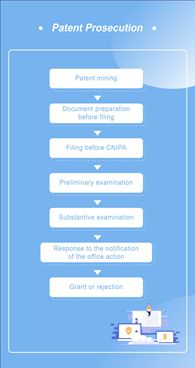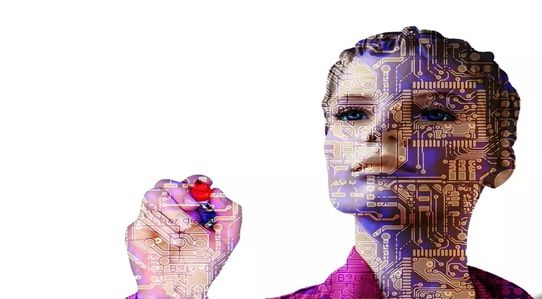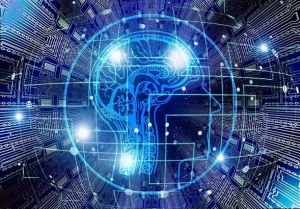The epidemic disease caused by COVID-19 has greatly affected people's daily work and life. For example, many intellectual property (IP) employees are working remotely from home. It is believed that this epidemic situation will accelerate changes promoted by artificial intelligence (AI) to people's daily work and life. Let's imagine the future, and take a look at which tasks AI could take over in patent prosecution.
Before discussing this issue, let's first learn about AI. The development of machine learning drives progress in AI, and the learning capability of a machine comes from a large quantity of training data including definite results. For example, if a trained machine is expected to be able to identify masks and goggles, a great number of photos of masks and of goggles, need to be inputted. These photos are labeled for identifying which are the masks and which are the goggles; and finally, the photos and labels are inputted together into the machine. After training, the machine is able to recognize and distinguish between masks and goggles.

From the learning method of the machine, it can be concluded that, if the result of one task is definite, machine learning is competent; and if the result of one task is indefinite, the possibility of AI replacing a human is small. In short, the more definite the result is, the easier the task is to be done by machines.
Let's take a look at which tasks in the patent prosecution have relatively definite results and may be done by machines. In the following, invention is taken as an example for illustration.

Referring to the prosecution above, the results of which steps are definite? Let's review it step by step:

For this work, there is no explicit input and output. There are different operation methods for different projects, for example, if an applicant has worked out a novel device, patentable points of the novel device should be outlined; and if an applicant improves a process, patentable points of the novel process should be outlined. That is to say, different operation methods are applicable to different technologies; from this perspective, the current machine learning technology is, as of yet, unable to complete the patent mining work.

For Chinese applicants, document preparation before filing involves drafting the patent application documents; for foreign applicants, patent applications can be filed in China under PCT or Paris Convention, and the document preparation before filing usually involves translating the patent application documents. In the following, let's explain the two situations one by one.
(1) Drafting of patent application documents
On the basis of a patentable point, different patent agents might have different ideas for drafting the patent application documents. The difference may be in terms of the layout of the claims, the context of the description, and the generalization of terms. In other words, the drafting of patent application documents is like an art work. Although it seems that there are rules for drafting, the results differ in thousands of ways. From this perspective, it is also very difficult to use a machine instead of manually drafting patent application documents. However, as patent application documents are legal documents, they must satisfy the relevant provisions of the Patent Law and from this point of view, the drafting of patent application documents has certain regularity. Therefore, in the future, machine learning will certainly assist, to some extent, in the drafting of patent application documents.
(2) Translation of patent application documents
Translating patent application documents means translating patent application documents in a foreign language into Chinese. It should be noted that patent application documents are strict legal documents. This process can be simply divided into text translation and legal adaptive adjustment.

The legal adaptive adjustment requires an agent to adjust the original application documents according to the local patent law and the strategy of the applicant, and thus for now, this part of the work cannot be done by a machine. On the other hand, text translation needs to be faithful to the original text, and thus the translation thereof is definite. Therefore, it is very possible to use a machine to complete patent translation.
For example, we can use online machine translation tools to help us complete the first step of translation, e.g. PremiWord Translation (http://www.premiword.com.cn/), which is a translation service provider specializing in the intellectual property industry and has created the PremiWord AI translation engine (English←→Chinese and Japanese←→Chinese) for patents and patent examination opinions based on more than 50 million bilingual sentence pairs.

The preliminary examination is to check whether there are formality errors in the patent application documents. At present, there is software available which can perform an automatic formality check on the patent application documents. Therefore, the examination for some formality errors can be done by software rather than AI.

In the substantive examination process, performing a patent search requires the most effort of the examiner. Here AI search tools can assist examiners in search and examination. The AI search tools enables quick acquisition of the closest prior art and analysis of the differences between the application and said prior art; as well as the current available legal judgment automatic generation system, AI technology also enables automatic drafting of a notification of the office action, thereby greatly improving the examination efficiency.

Responding to the notification of office action is a process of arguing the differences or modifying the claims. This process could allow for machine assistance, for example, the machine could argue on the basis of learned technical materials, and if the machine determines that the difference is small or there is no difference, the machine could provide various modification suggestions corresponding to the application documents, and perform a search on the claims modified according to each modification suggestion, and determine the probability of patent grant for the application modified according to each of the modification suggestions, for the applicant's reference.

For a foreign applicant, before responding to the notification of the office action, there is an additional process of translating the examination opinions, that is, it is necessary to translate the notification of the office action in Chinese into a language that the applicant understands. This process is the same as the translation process of the application documents, and can also be done by a machine.
In summary, for the whole patent prosecution, there are many parts in which AI can provide assistance, and if said parts are all machinized, many manual operations will be omitted: for the examiner, the examination efficiency can be improved; for the applicant, the application cost can be reduced; and the agent can focus on mining, drafting and patent layout, so that the applicant can benefit from patents to the greatest extent. Let's look forward to the practical application of AI technology in the patent field!
The content of this article is intended to provide a general guide to the subject matter. Specialist advice should be sought about your specific circumstances.

